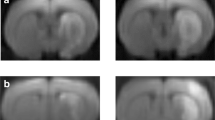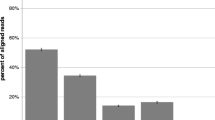Abstract
Gene expression in cerebral ischemia has been a subject of intense investigations for several years. Studies utilizing probe-based high-throughput methodologies such as microarrays have contributed significantly to our existing knowledge but lacked the capacity to dissect the transcriptome in detail. Genome-wide RNA-sequencing (RNA-seq) enables comprehensive examinations of transcriptomes for attributes such as strandedness, alternative splicing, alternative transcription start/stop sites, and sequence composition, thus providing a very detailed account of gene expression. Leveraging this capability, we conducted an in-depth, genome-wide evaluation of the protein-coding transcriptome of the adult mouse cortex after transient focal ischemia at 6, 12, or 24 h of reperfusion using RNA-seq. We identified a total of 1007 transcripts at 6 h, 1878 transcripts at 12 h, and 1618 transcripts at 24 h of reperfusion that were significantly altered as compared to sham controls. With isoform-level resolution, we identified 23 splice variants arising from 23 genes that were novel mRNA isoforms. For a subset of genes, we detected reperfusion time-point-dependent splice isoform switching, indicating an expression and/or functional switch for these genes. Finally, for 286 genes across all three reperfusion time-points, we discovered multiple, distinct, simultaneously expressed and differentially altered isoforms per gene that were generated via alternative transcription start/stop sites. Of these, 165 isoforms derived from 109 genes were novel mRNAs. Together, our data unravel the protein-coding transcriptome of the cerebral cortex at an unprecedented depth to provide several new insights into the flexibility and complexity of stroke-related gene transcription and transcript organization.
Access this article
We’re sorry, something doesn't seem to be working properly.
Please try refreshing the page. If that doesn't work, please contact support so we can address the problem.



Similar content being viewed by others
References
Hossmann K-A (2006) Pathophysiology and therapy of experimental stroke. Cell Mol Neurobiol 26:1055–1081. https://doi.org/10.1007/s10571-006-9008-1
Dirnagl U, Iadecola C, Moskowitz MA (1999) Pathobiology of ischaemic stroke: an integrated view. Trends Neurosci 22:391–397. https://doi.org/10.1016/S0166-2236(99)01401-0
Lipton P (1999) Ischemic cell death in brain neurons. Physiol Rev 79:1431–1568. https://doi.org/10.1016/j.shpsa.2008.02.001
Hori M, Nakamachi T, Rakwal R, Shibato J, Nakamura K, Wada Y, Tsuchikawa D, Yoshikawa A et al (2012) Unraveling the ischemic brain transcriptome in a permanent middle cerebral artery occlusion mouse model by DNA microarray analysis. Dis Model Mech 5:270–283. https://doi.org/10.1242/dmm.008276
Chen MJ, Wong CHY, Peng ZF, Manikandan J, Melendez AJ, Tan TM, Crack PJ, Cheung NS (2011) A global transcriptomic view of the multifaceted role of glutathione peroxidase-1 in cerebral ischemic-reperfusion injury. Free Radic Biol Med 50:736–748. https://doi.org/10.1016/j.freeradbiomed.2010.12.025
Bhattarai S, Pontarelli F, Prendergast E, Dharap A (2017) Discovery of novel stroke-responsive lncRNAs in the mouse cortex using genome-wide RNA-seq. Neurobiol Dis 108:204–212. https://doi.org/10.1016/j.nbd.2017.08.016
Dharap A, Nakka VP, Vemuganti R (2012) Effect of focal ischemia on long noncoding RNAs. Stroke 43:2800–2802. https://doi.org/10.1161/STROKEAHA.112.669465
Zhang J, Yuan L, Zhang X, Hamblin MH, Zhu T, Meng F, Li Y, Chen YE et al (2016) Altered long non-coding RNA transcriptomic profiles in brain microvascular endothelium after cerebral ischemia. Exp Neurol 277:162–170. https://doi.org/10.1016/j.expneurol.2015.12.014
Carmichael ST, Archibeque I, Luke L, Nolan T, Momiy J, Li S (2005) Growth-associated gene expression after stroke: evidence for a growth-promoting region in peri-infarct cortex. Exp Neurol 193:291–311. https://doi.org/10.1016/j.expneurol.2005.01.004
Moore DF, Li H, Jeffries N, Wright V, Cooper RA Jr, Elkahloun A, Gelderman MP, Zudaire E et al (2005) Using peripheral blood mononuclear cells to determine a gene expression profile of acute ischemic stroke: a pilot investigation. Circulation 111:212–221. https://doi.org/10.1161/01.CIR.0000152105.79665.C6
Szaflarski J, Burtrum D, Silverstein FS (1995) Cerebral hypoxia-ischemia stimulates cytokine gene expression in perinatal rats. Stroke 26:1093–1100. https://doi.org/10.1161/01.STR.26.6.1093
Tang Y, Xu H, Du XL et al (2006) Gene expression in blood changes rapidly in neutrophils and monocytes after ischemic stroke in humans: a microarray study. J Cereb Blood Flow Metab 26:1089–1102. https://doi.org/10.1038/sj.jcbfm.9600264
Xu Z, Ford GD, Croslan DR et al (2005) Neuroprotection by neuregulin-1 following focal stroke is associated with the attenuation of ischemia-induced pro-inflammatory and stress gene expression. Neurobiol Dis 19:461–470. https://doi.org/10.1016/j.nbd.2005.01.027
Tang Y, Pacary E, Fréret T, Divoux D, Petit E, Schumann-Bard P, Bernaudin M (2006) Effect of hypoxic preconditioning on brain genomic response before and following ischemia in the adult mouse: identification of potential neuroprotective candidates for stroke. Neurobiol Dis 21:18–28. https://doi.org/10.1016/J.NBD.2005.06.002
Tang Y, Lu A, Aronow BJ, Wagner KR, Sharp FR (2002) Genomic responses of the brain to ischemic stroke, intracerebral haemorrhage, kainate seizures, hypoglycemia, and hypoxia. Eur J Neurosci 15:1937–1952. https://doi.org/10.1046/j.1460-9568.2002.02030.x
Reyes A, Huber W (2017) Alternative start and termination sites of transcription drive most transcript isoform differences across human tissues. Nucleic Acids Res 46:582–592. https://doi.org/10.1093/nar/gkx1165
Wolinski P, Glabinski A (2013) Chemokines and neurodegeneration in the early stage of experimental ischemic stroke. Mediat Inflamm 2013:727189. https://doi.org/10.1155/2013/727189
Rosito M, Deflorio C, Limatola C, Trettel F (2012) CXCL16 orchestrates adenosine A3 receptor and MCP-1/CCL2 activity to protect neurons from excitotoxic cell death in the CNS. J Neurosci 32:3154–3163. https://doi.org/10.1523/JNEUROSCI.4046-11.2012
Ueland T, Smedbakken LM, Hallén J, Atar D, Januzzi JL, Halvorsen B, Jensen JK, Aukrust P (2012) Soluble CXCL16 and long-term outcome in acute ischemic stroke. Atherosclerosis 220:244–249. https://doi.org/10.1016/j.atherosclerosis.2011.10.004
Stetler RA, Gao Y, Zhang L, Weng Z, Zhang F, Hu X, Wang S, Vosler P et al (2012) Phosphorylation of HSP27 by protein kinase D is essential for mediating neuroprotection against ischemic neuronal injury. J Neurosci 32:2667–2682. https://doi.org/10.1523/JNEUROSCI.5169-11.2012
Nimura T, Weinstein PR, Massa SM, Panter S, Sharp FR (1996) Heme oxygenase-1 (HO-1) protein induction in rat brain following focal ischemia. Mol Brain Res 37:201–208
Yeo G, Holste D, Kreiman G, Burge CB (2004) Variation in alternative splicing across human tissues. Genome Biol 5:R74. https://doi.org/10.1186/gb-2004-5-10-r74
Chih B, Gollan L, Scheiffele P (2006) Alternative splicing controls selective trans-synaptic interactions of the neuroligin-neurexin complex. Neuron 51:171–178. https://doi.org/10.1016/j.neuron.2006.06.005
Funding
This study was funded by the JFK Neuroscience Institute, Edison, NJ.
Author information
Authors and Affiliations
Corresponding author
Ethics declarations
Conflict of Interest
The authors declare that they have no conflict of interests.
Electronic supplementary material
ESM 1
(XLSX 477 kb)
Rights and permissions
About this article
Cite this article
Bhattarai, S., Aly, A., Garcia, K. et al. Deep Sequencing Reveals Uncharted Isoform Heterogeneity of the Protein-Coding Transcriptome in Cerebral Ischemia. Mol Neurobiol 56, 1035–1043 (2019). https://doi.org/10.1007/s12035-018-1147-0
Received:
Accepted:
Published:
Issue Date:
DOI: https://doi.org/10.1007/s12035-018-1147-0




